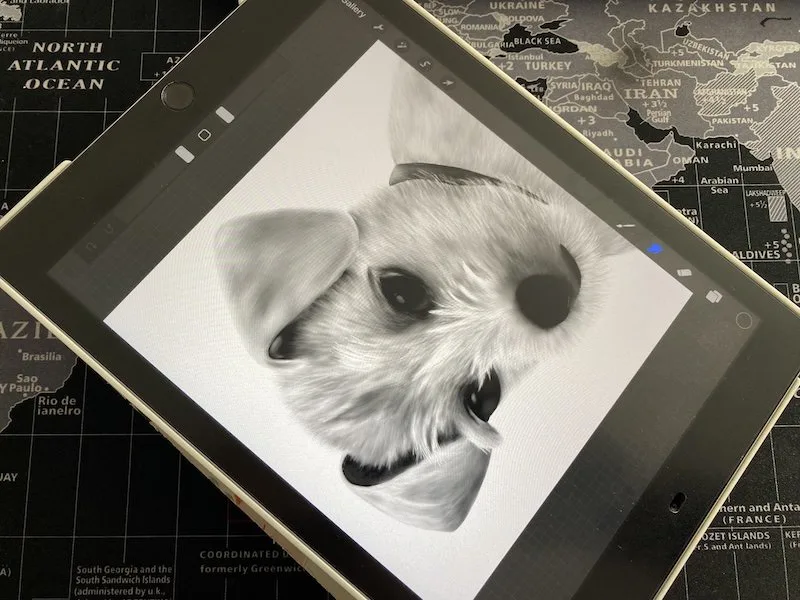When we’re creating our art, it’s natural to keep it right side up. That’s the way it’s supposed to be viewed, right? Well, flipping your drawings in a different direction can actually be helpful with noticing flaws. It has for me!
Flipping drawings can be helpful with noticing flaws because it allows us to see our art in a new way. This new perspective can highlight imperfections we didn’t notice before and areas that we want to devote more attention to.
For my own art, flipping it sideways or upside down has been a huge help.
When I’m creating my work, I get tunnel vision and zoned into what I’m making. While it’s awesome to get into a good flow with my work, it can pull me out of the analytical mindset I need to understand the areas that need improvement.
I get accustomed to the perspective of my drawing that I had for the hours and hours I spent creating it.
So, I flip my drawing and see what I’ve missed!
You may have heard of an artist named Georg Baselitz who has displayed his work upside down. Baselitz mentions that there’s some irritation with viewing a piece of art upside down and that this irritation can make people pay closer attention to what they’re looking at (source).
I think this is a really neat idea to keep in mind. Whether you become irritated by looking at your art upside down or not, there’s something to be learned from the idea that looking at something from a different angle sparks us to pay more attention to it.
There’s another artist named Betty Edwards who takes things even a step further and creates drawings upside down from the get go. In his book, he talks about how drawing upside down helps the artist shift into a visual and perceptual mindset when interacting with their work (source).
To me, visual and perceptual sounds like a great mindset to be in when creating my own art!
So, how do I go about flipping my drawings when I’m working so that I can see it from a new perspective and shift my mindset around it?
For me, I’ll do this with a traditional drawing that I’ve done on a piece of paper, or my iPad. Heck, I’ll flip whatever I’m drawing, on whatever surface, with whatever medium.

I like to flip my drawing in any number of directions. Turning it diagonally, sideways, upside down – all of these different positions give me different perspectives of my work that are helpful in seeing the various flaws I may have missed.

In regards to timing, I find that it’s important to flip my drawings periodically when I’m working. That way, I’m catching any flaws that I need to work on as I go.
Of course, I often get immersed in my work and forget to flip things as frequently as I’d like to. But, hey, a good flip here and there when I remember it is a great help.
I also make it a point to flip my work more regularly as I’m nearing the end of a drawing. This will give me a great idea of what still needs work as I’m finishing up.
It’s also important to note that the times when I find it most valuable to flip my work is when I’m feeling off about something in my drawing and I can’t figure out what it is.
It’s a common experience as artists – staring at parts of our drawings and having no idea why they look strange. Well, flipping your drawing might help!
This new perspective on your drawing might help you see the issue you’ve been missing.
It might seem new and unfamiliar to flip your drawings. That’s ok! It can feel weird at first.
Overtime, it might become a handy tool for noticing flaws in your drawings so that you can continue working on them and getting them to where you want them to be. Flipping my drawings has helped my own art and become a valuable way to assess my work.

Diana has been an artist for over 27 years and has training in drawing, painting, digital drawing and graphic design. Diana’s latest obsession is digitally drawing with Procreate and Procreate Dreams. Diana has experience selling her art across a number of platforms and loves helping other artists learn how to make money from their art as well.

